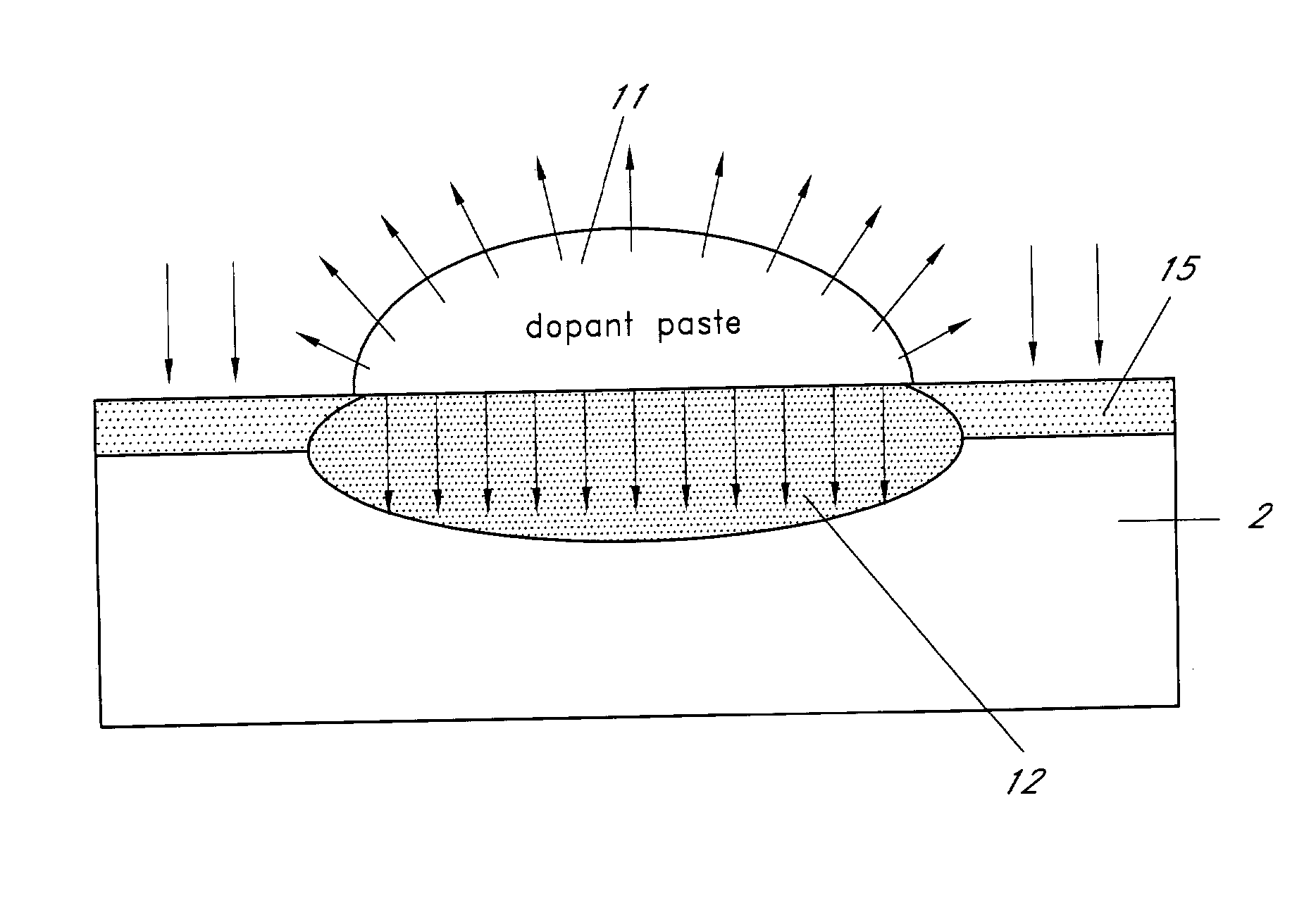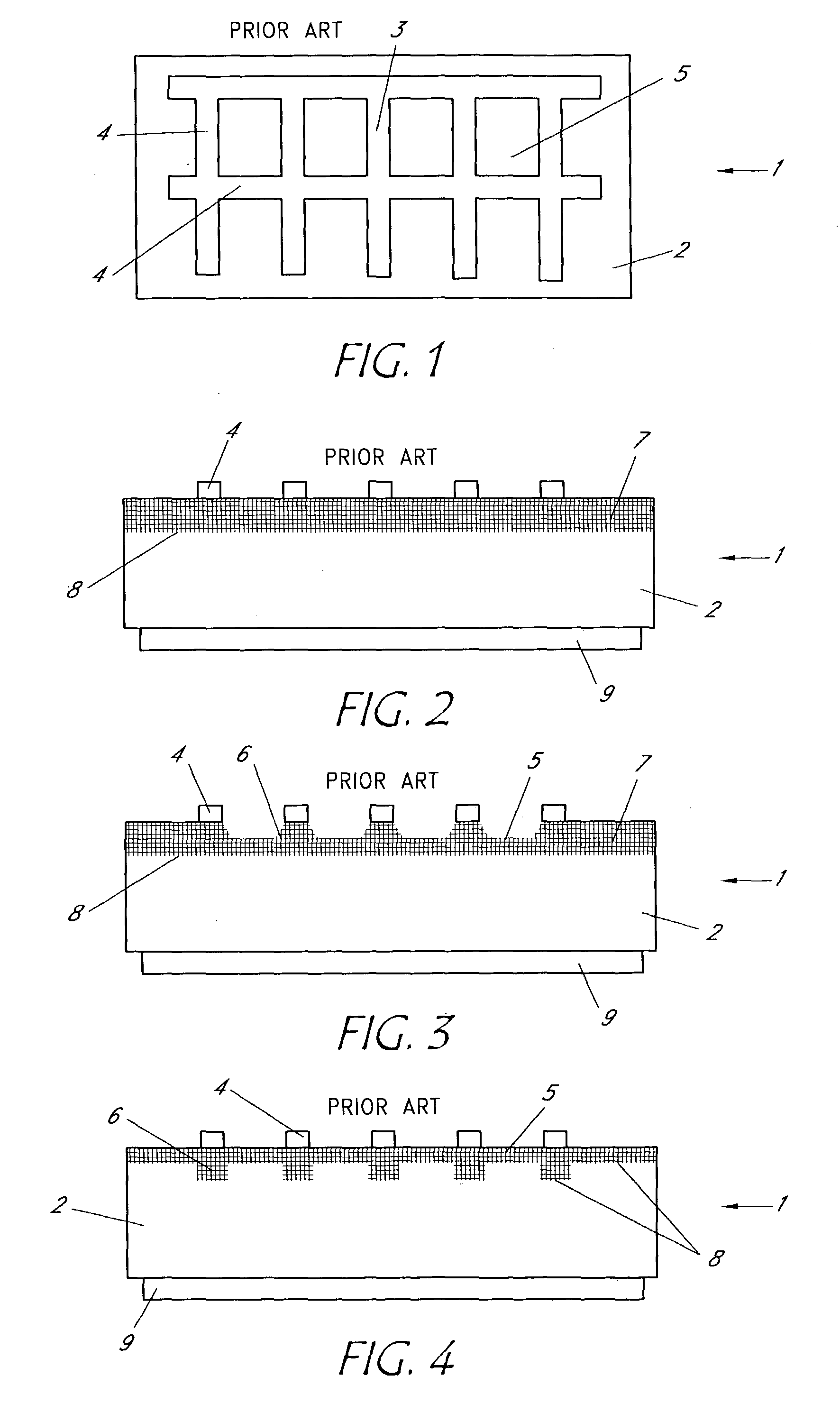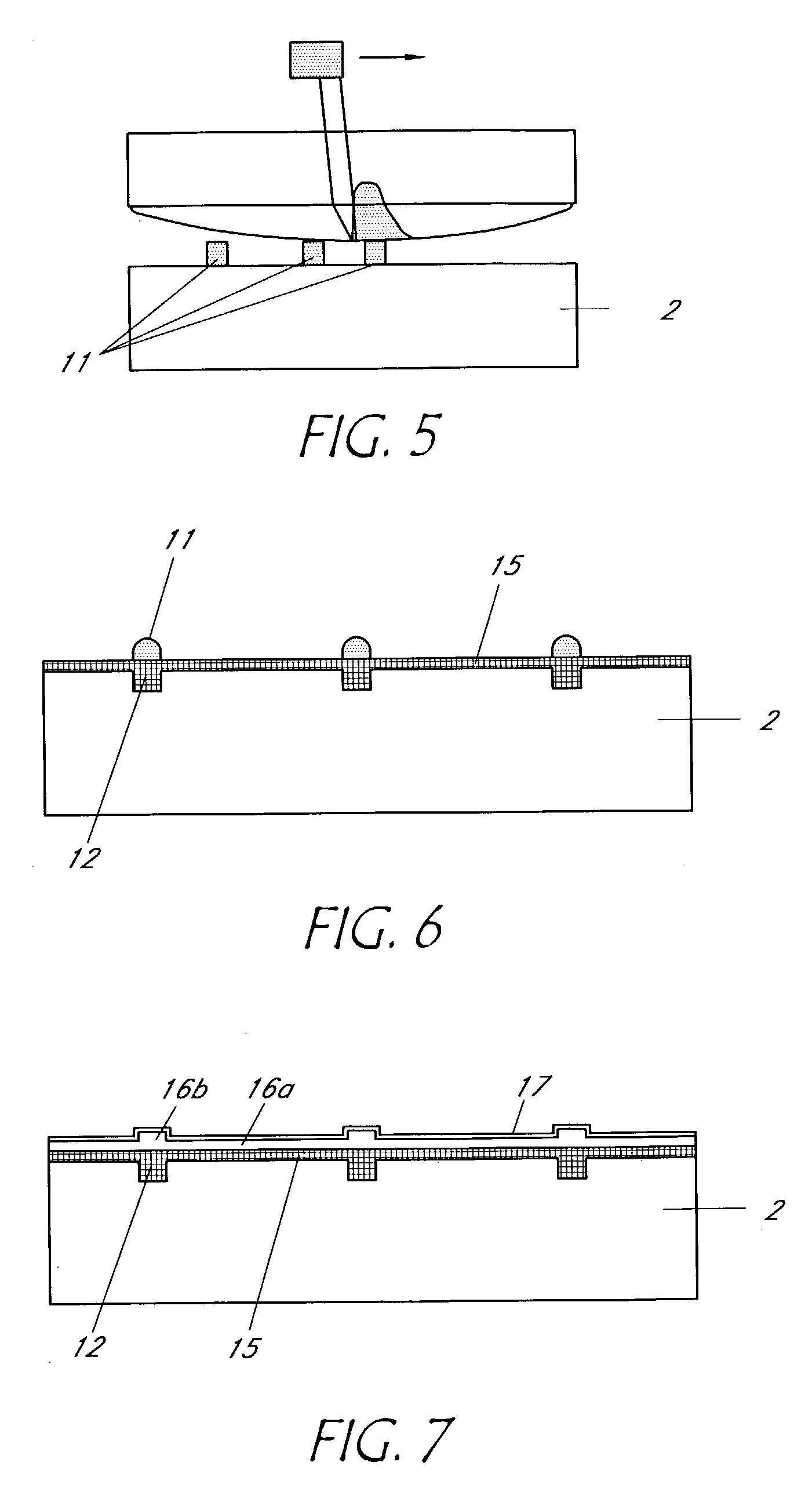Semiconductor device with selectively diffused regions
a technology of selective diffusion and semiconductors, applied in the direction of electrical equipment, climate sustainability, photovoltaic energy generation, etc., can solve the problems of increasing production costs, increasing complexity and manufacturing costs, and considerable efficiency losses
- Summary
- Abstract
- Description
- Claims
- Application Information
AI Technical Summary
Problems solved by technology
Method used
Image
Examples
Embodiment Construction
[0022] In the following the invention will be described with reference to certain specific embodiments and with reference to the drawings but the invention is not limited thereto but only by the claims. In the drawings some of the dimensions, for instance the thickness of layers, may have been exaggerated for purposes of clarity. In particular, the invention will be explained with reference to a photovoltaic device, sometimes called a solar cell, but the invention is not limited thereto but may find application in semiconductor devices generally. Further, the invention will mainly be described with reference to the formation of differentiated n++- and n+-type regions in a p-type substrate. The invention is not limited thereto. The methods of the present invention may be applied to the formation of differentiated p-type regions in an n-type substrate or the formation of n++-and n+-type regions in an undoped or n-type substrate or p++- and p+-type regions in an undoped or p-type subst...
PUM
 Login to View More
Login to View More Abstract
Description
Claims
Application Information
 Login to View More
Login to View More - R&D
- Intellectual Property
- Life Sciences
- Materials
- Tech Scout
- Unparalleled Data Quality
- Higher Quality Content
- 60% Fewer Hallucinations
Browse by: Latest US Patents, China's latest patents, Technical Efficacy Thesaurus, Application Domain, Technology Topic, Popular Technical Reports.
© 2025 PatSnap. All rights reserved.Legal|Privacy policy|Modern Slavery Act Transparency Statement|Sitemap|About US| Contact US: help@patsnap.com



